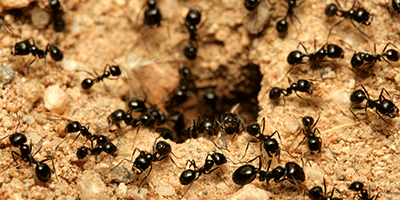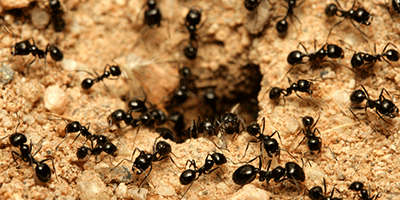Flexible Response
In some social animals, the activity (seeking food, for instance) of a given individual increases with the number of already active ones, which can make the group behavior nonlinear, even chaotic. External stimuli also have a strong effect, for example, the daily temperature cycle: warmer ants are less active. In Physical Review Letters, Stamatios Nicolis of Uppsala University, Sweden, and colleagues report experimental observations and modeling of how ants respond to both social interactions (like colony crowding) and environmental factors. They discover that instead of following temperature in lockstep, the ants show irregularities and phase shifts, such as asymmetric “waking up” and “winding down,” that are not random but a flexible response to changing conditions.
Their model follows the number of active ants (defined as those leaving or entering the nest) in the presence of crowding and an external stimulus (nest temperature). Nicolis et al. see four distinct patterns in activity over time as the amplitude of temperature variation increases: quasiperiodic, chaotic, phase locked, and oscillatory with overshoot and undershoot. They predict that quasiperiodic and chaotic responses to changing temperatures are the hallmarks of social animals that have evolved to deal with external stimuli in a flexible way.
To test their model, Nicolis et al. monitored the activity of Cuban leaf cutter ants with an infrared sensor that detected entry and exit from the nest, while also recording the nest temperature over many days. The data show that the colony mostly remains quasiperiodic or chaotic, which allow for adaptive responses to environment. This picture of living on the edge of chaos, the authors say, may apply to other social animals including, perhaps, humans. – David Voss





